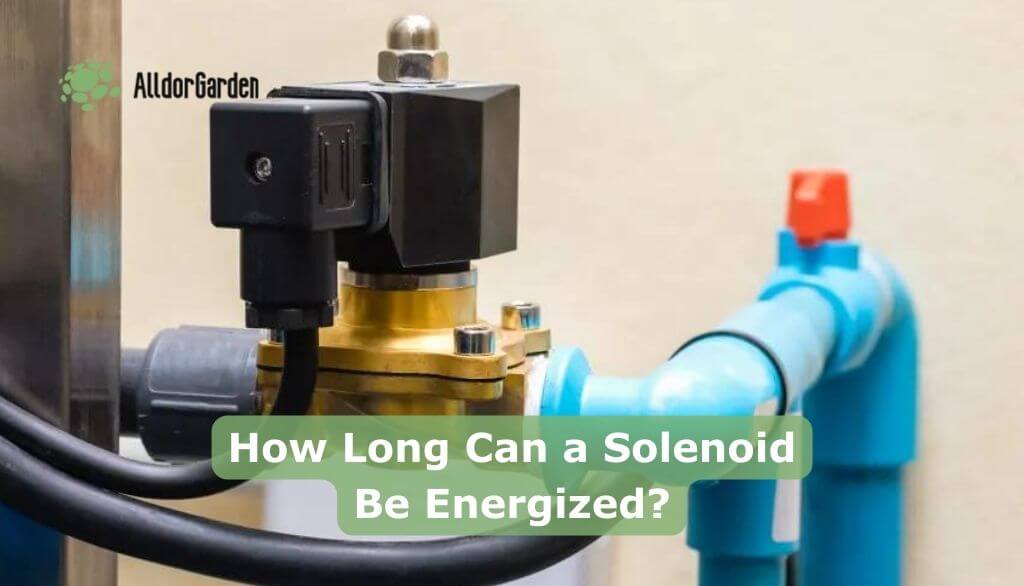Solenoids are electromechanical devices that convert electrical energy into mechanical motion. They are used in a wide range of applications, from automotive systems to industrial equipment and consumer electronics. One common question that arises is how long a solenoid can be energized before it overheats or fails.
The answer to this question depends on several factors, including the type of solenoid, its operating voltage, and the amount of current flowing through it. In general, solenoids are designed to operate within a specific range of parameters, and exceeding these parameters can lead to damage or failure.

The Technical Specifications of Solenoids and their Impact on Longevity
Solenoids are critical components in various electromechanical systems, ranging from industrial equipment to consumer electronics. The longevity and optimal performance of a solenoid depend significantly on the technical specifications and design features.
The type of solenoid, operating voltage, and current rating are some of the primary technical specifications that determine the longevity and durability of a solenoid.
Solenoids come in different types, such as linear and rotary, and each type has its own set of specifications. A linear solenoid with a shorter stroke length can typically be energized for longer periods than a solenoid with a longer stroke length. For example, a linear solenoid may have a stroke length of 10 mm and an operating voltage of 12VDC, while a rotary solenoid may have a maximum torque of 10 Ncm and an operating voltage of 24VDC. These specifications determine the maximum amount of force or torque that the solenoid can generate and the amount of electrical energy it can consume.
Similarly, a solenoid with a higher operating voltage and current rating can typically sustain longer periods of energization without overheating or failing.
When selecting a solenoid for a specific application, it is crucial to consider the technical specifications of the solenoid and ensure that they align with the requirements of the system. Overloading or underloading a solenoid can have significant implications for its longevity and optimal performance.
For example, underloading a solenoid can lead to incomplete strokes or sluggish operation, while overloading can result in overheating or even total failure.
Another critical consideration is the ambient temperature and environmental conditions of the system. High temperatures or extreme weather conditions can exacerbate the effects of overloading or underloading, potentially leading to premature failure or suboptimal performance.
By paying attention to these technical specifications, one can optimize the performance and lifespan of solenoids, leading to better overall system performance and reliability.
The Role of Solenoids in Various Applications and their Energization Limits
Solenoids are used in a wide range of applications, such as controlling valves, opening and closing doors, and operating locks. Each application has its own requirements, and the solenoid must be able to operate within these requirements.
Solenoids are used in various applications to control the flow of fluids or mechanical components. In automotive systems, solenoids are used to control fuel injection, air conditioning, and automatic transmission. The optimal performance and longevity of a solenoid in each application depend on several factors, including its energization limits.
Fuel injection systems in modern vehicles use solenoids to control the amount of fuel that enters the engine cylinders. These solenoids are typically energized for brief periods, ranging from a few milliseconds to a few seconds, to ensure accurate fuel injection and combustion. In this application, solenoids must be designed to handle high operating pressures and temperatures and withstand frequent energization and de-energization cycles.
Solenoids are also commonly used in automotive air conditioning systems to control the flow of refrigerant. These solenoids are energized for longer periods, ranging from a few seconds to several minutes, depending on the cooling demand of the system. The energization limits of these solenoids depend on factors such as the operating pressure and temperature of the refrigerant and the thermal conductivity of the solenoid components.
In automatic transmission systems, solenoids are used to control the shifting of gears and the engagement of clutches. These solenoids are energized for brief periods, typically ranging from a few milliseconds to a few seconds, depending on the specific shift sequence. The energization limits of these solenoids depend on factors such as the operating pressure and temperature of the transmission fluid and the mechanical load on the solenoid components.
The role of solenoids in various applications varies significantly, and so do their energization limits.
Tips for Maintaining Solenoids
Solenoids are critical components in various electromechanical systems, and their optimal performance and longevity depend significantly on proper maintenance. Regular cleaning, lubrication, and inspection are essential in ensuring that solenoids operate optimally and last for an extended period.
Cleaning solenoids is an essential maintenance activity that helps to remove dust, dirt, and other debris that can accumulate on the solenoid components. Cleaning should be done regularly, depending on the operating conditions and environment of the system. Typically, cleaning can be done using a soft brush or compressed air to remove loose debris, followed by a solvent to remove any stubborn dirt or grime.
Lubrication is another crucial maintenance activity that helps to reduce friction and wear on the solenoid components. The lubricant used should be compatible with the solenoid components and should be applied sparingly to avoid excessive buildup. In some cases, solenoids may require specialized lubricants to withstand high operating pressures and temperatures.
Regular inspection is also critical in detecting signs of wear or damage on the solenoid components. Signs of wear or damage include cracks, corrosion, or deformation of the solenoid components. Inspections should be done regularly, and any signs of wear or damage should be addressed promptly to prevent further deterioration of the solenoid components.
In addition to cleaning, lubrication, and inspection, other maintenance activities, such as monitoring the operating conditions and ensuring proper electrical connections, are crucial in ensuring optimal performance and longevity of solenoids. Operating conditions, such as temperature, pressure, and load, can significantly impact the performance and longevity of solenoids. Ensuring proper electrical connections helps to prevent overheating and other electrical failures.
Staying Safe While Working with Solenoids
One of the primary safety concerns associated with solenoids is the risk of electrical shock. Solenoids operate on high electrical voltages and currents, and any contact with the energized components can result in severe electrical shock. To minimize the risk of electrical shock, it is crucial to follow proper electrical safety procedures when working with solenoids. These procedures may include using proper personal protective equipment, such as gloves and safety glasses, and ensuring that the solenoid is disconnected from the power source before any maintenance activity is performed.
Another safety concern associated with solenoids is the risk of thermal damage due to overheating. Energizing a solenoid for an extended period can cause it to heat up, and if the heat is not dissipated properly, it can result in thermal damage to the solenoid components. To avoid overheating, it is essential to operate solenoids within their specified voltage and current ranges and to limit the amount of time that they are energized continuously. Solenoids should also be placed in a well-ventilated area to allow for proper heat dissipation.
In addition to electrical shock and thermal damage, solenoids can also pose mechanical risks due to the moving components. Solenoids that are not properly mounted or secured can vibrate or move excessively during operation, potentially causing injury or damage to surrounding components. To avoid mechanical risks, it is essential to ensure that solenoids are properly mounted and secured, and that any surrounding components are protected from potential impacts or vibrations.
How Do You Test a 12 Volt Solenoid?
FAQs
What Is the Maximum on Time for a Solenoid?
Can You Burn Out a Solenoid?
What Happens When the Solenoid Valve Is Energized?
What Is the Percentage of Time a Solenoid Is Energized Relative to the Total Cycle Time Called?
Does Length Affect Solenoid?
Can a Starter Solenoid Run Continuously?
What Voltage Should a Solenoid Be?
What Happens When a Solenoid Fails?
Conclusion
The duration for which a solenoid can be energized depends on various factors such as its technical specifications, application, and operating conditions. It is crucial to understand these factors to ensure that the solenoid operates efficiently and reliably without overheating or failing.
Proper maintenance, such as cleaning and lubricating the solenoid, can also extend its lifespan. Finally, safety precautions should be taken while working with solenoids to prevent any accidents or hazards.
By understanding these factors and taking necessary precautions, we can ensure the longevity and efficient operation of solenoids.



